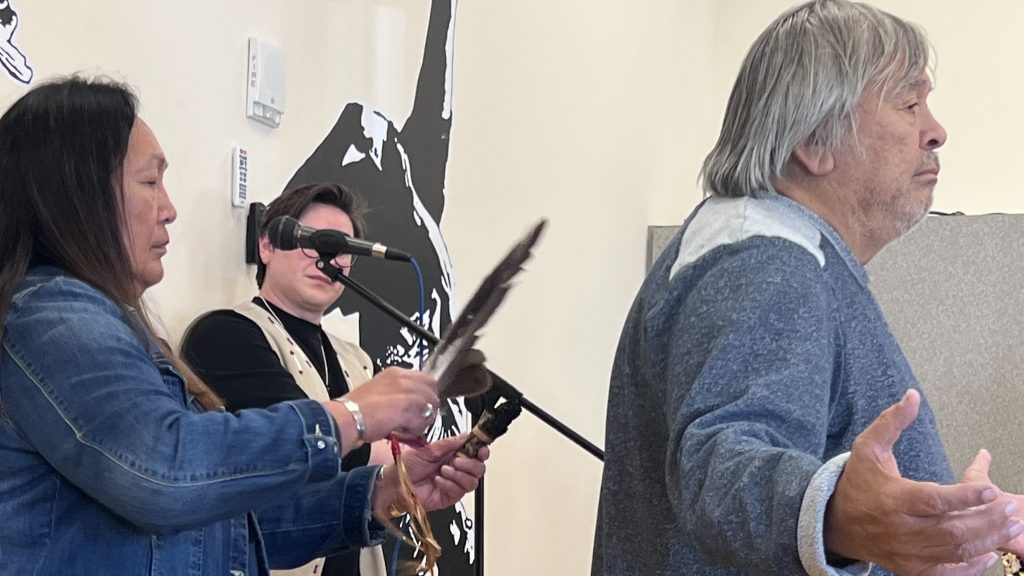Podcast: Play in new window | Download | Embed
The U.S. Interior Department says it reviewed over a million pages of federal records to produce a two-volume report on Native boarding schools.
Interior Secretary Deb Haaland (Laguna Pueblo) released the second volume last month.
As KNBA’s Rhonda McBride reports, boarding school survivors and their advocates welcome the report, but say it only scratches the surface.
Although Government-run boarding schools for Alaska Native children go back to the 1800’s and continued into the 1960’s, Alaskans have only begun to come to terms with their impact.
The Interior Department’s report counted more than 400 federal Indian boarding schools in the United States and its territories, with 22 in Alaska.
The second volume also lists the number of deaths of Native American children at these schools – about a thousand nationwide, 32 in Alaska.
This lastest report also includes the personal stories of boarding school survivors like Jim LaBelle
“They’re pretty shocking really. The hard part has yet to happen, that is to do that really hard research.”
In April, LaBelle and other Alaska Native survivors shared their stories with oral historians, who traveled around the nation documenting boarding school trauma.
LaBelle told them about the sexual abuse students experienced at the Wrangell Institute in Southeast Alaska, where he was sent when he was eight-years-old.
LaBelle says the federal report, though extensive, is only part of Alaska’s story.
“It’s only beginning. We need to look at the churches that participated contractually.”
The federal report acknowledges that it only covers federal schools and not other institutions run by churches and religious organizations.
“You can’t make healing happen, unless you understand the wound.”
Benjamin Jacuk is Director of Indigenous Research at the Alaska Native Heritage Center. He has studied the records and the correspondence between churches and other institutions.
“It becomes crystal clear the motives. It really shows these were not meant to help Alaska Native, American Indian, Native Hawaiian people, but really a means to an end to erase us.”
In the federal report, Assistant Secretary Bryan Newland makes recommendations that include apologies to communities for forcibly taking children from their homes to assimilate them – as well as programs that offer healing through the revitalization of language and culture.
The historic link between the Choctaw Nation and victims of the Irish famine were honored this month with a new sculpture, as Seo McPolin reports from Ireland.
“The Gift” is a life-sized bronze statue, which marks the $170 donation from citizens of the Choctaw Nation to a Quaker relief organization in Ireland in 1847.
A million people died and another million emigrated during the Great Famine, which was largely caused by the colonialist policies of the British government.
When Irish-American sculptor Brendan O’Neill learned about this history, he was moved to create the piece, which he described during an interview with Ireland’s national broadcaster RTE.
“It is a life-sized sculpture of a woman, an older Choctaw woman, and a young man embracing her with one hand. Both of them extending out their arms in friendship and sympathy to the Irish.”
His original piece was installed at the Choctaw Cultural Centre in Oklahoma last year.
This month, he helped dedicate a replica at the National Famine Museum in Ireland.
The Saint Regis Mohawk Tribe in New York is helping community members with cleanup efforts following Tropical Strom Debby.
The tribe declared a state of emergency over the weekend due to the impacts of the recent storm.
The tribe is encouraging residents to document flood damage and is providing disposal bins for cleanup efforts.
Get National Native News delivered to your inbox daily and stay up-to-date on the 2024 Native Vote. Sign up for our daily newsletter today.



